Posts Tagged ‘historical fiction’
 Jonah and Katherine hope to have a little time to spend in the twentieth century before going on another time adventure, but the past catches up with them when Daniella (Anastasia Romanov in 1918) shows up on their doorstep with their friend Chip. Before they know it, Gavin (formerly Alexei Romanov) has whisked them back to Russia on July 16, 1918, where time is running out for the Romanov family. How can Jonah and Katherine save their friends without a fully working Elucidator and without any contact with time agents. Is there any hope at all when modern day scientists have discovered the remains of the entire family, including the bones of Alexei and Anastasia?
Jonah and Katherine hope to have a little time to spend in the twentieth century before going on another time adventure, but the past catches up with them when Daniella (Anastasia Romanov in 1918) shows up on their doorstep with their friend Chip. Before they know it, Gavin (formerly Alexei Romanov) has whisked them back to Russia on July 16, 1918, where time is running out for the Romanov family. How can Jonah and Katherine save their friends without a fully working Elucidator and without any contact with time agents. Is there any hope at all when modern day scientists have discovered the remains of the entire family, including the bones of Alexei and Anastasia?
Just like the first five books in the series, Risked by Margaret Peterson Haddix is packed with nonstop action and history. Just when Jonah and Katherine come up with one solution, ten more problems pop up, including bad guys Gary and Hodge, who have escaped from time prison and are determined to make their money from selling the missing children from history. As the series progresses (and as the characters grow through their experiences), Haddix explores more of the philosophical issues of time travel and fate and destiny and God.
Of course, we still don’t learn who Jonah was in history, but we do know who he is through his time adventures. We still have a lot of missing children to account for and to save from history.
My students love graphic novels, and my one small shelf cannot keep up with the demand. I’m excited to have several more to introduce after Christmas break. One of the things I am enjoying as I explore more graphic novels is the great variety of stories that are told through this format.
Pandemonium (Scholastic graphix 2012) by Chris Wooding and Cassandra Diaz
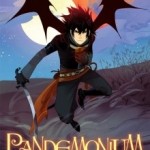 The world of Pandemonium is dark and full of secrets. Seifer Tombchewer is a hero in his small mountain village for playing skullball, but he longs to see what lies beyond. One day he gets his wish, but it is not at all what he expected. He has been kidnapped because he looks just like Prince Talon. Now he is to take the prince’s place in order to fool the kingdom until the real prince can be found again. He knows nothing of royalty, but begins to make a better prince than the one who disappeared. I enjoyed this dark and fantastical twist on a tale of mistaken identity, but there are many more questions to be answered. Where is the missing prince? How did the royal advisors know of Seifer’s existence in a village that has forgotten the wider world? Just what other secrets lie in Seifer’s past that even he doesn’t know? Not only is this gem a dark fantasy, it rocks with British humor!
The world of Pandemonium is dark and full of secrets. Seifer Tombchewer is a hero in his small mountain village for playing skullball, but he longs to see what lies beyond. One day he gets his wish, but it is not at all what he expected. He has been kidnapped because he looks just like Prince Talon. Now he is to take the prince’s place in order to fool the kingdom until the real prince can be found again. He knows nothing of royalty, but begins to make a better prince than the one who disappeared. I enjoyed this dark and fantastical twist on a tale of mistaken identity, but there are many more questions to be answered. Where is the missing prince? How did the royal advisors know of Seifer’s existence in a village that has forgotten the wider world? Just what other secrets lie in Seifer’s past that even he doesn’t know? Not only is this gem a dark fantasy, it rocks with British humor!
Resistance: Book 1 by Carla Jablonski and Leland Purvis (First Second 2010)
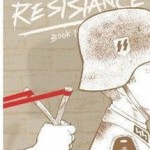 Travel through history to when World War II raged across the globe and land in France, where part of the citizens support the occupying Germans, and where many of them fight against the occupation. It is hard for Paul and his sisters to know who they can trust, but when their friend Henri’s parents are rounded up by the Nazis for being Jewish, they must decide which side they will take. Their first action is to hide their friend Henri, but soon they find themselves delivering messages for the Resistance as well trying to reunite Henri with his parents. I can’t imagine living in an occupied country and having to make the decisions faced by people such as Paul and his family. I hope I never have to learn.
Travel through history to when World War II raged across the globe and land in France, where part of the citizens support the occupying Germans, and where many of them fight against the occupation. It is hard for Paul and his sisters to know who they can trust, but when their friend Henri’s parents are rounded up by the Nazis for being Jewish, they must decide which side they will take. Their first action is to hide their friend Henri, but soon they find themselves delivering messages for the Resistance as well trying to reunite Henri with his parents. I can’t imagine living in an occupied country and having to make the decisions faced by people such as Paul and his family. I hope I never have to learn.
Baltimore: The Plague Ships (Dark Horse Books 2010) by Mike Mignola, Christopher Golden, Ben Stenbeck
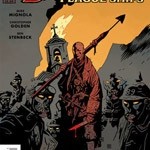 Horror is not my favorite genre. (The blood and gore and general scariness give me nightmares), but I see students who are horror fans devouring this graphic novel. Lord Baltimre is fighting the vampires, but he is cursed and downright creepy himself. The vampires definitely do not sparkle. They and the other creatures of the plague are dark and deadly and horrifically ugly as they creep out of shadows and sunken wrecks. Throw in a superstitious witch and her beautiful but stubborn granddaughter, and the sense of foreboding grows. The dark illustrations with lots of black and red enhance the feeling of fear throughout the story. It is not for the faint of heart. Who is going to stay up with me and my nightmares tonight?
Horror is not my favorite genre. (The blood and gore and general scariness give me nightmares), but I see students who are horror fans devouring this graphic novel. Lord Baltimre is fighting the vampires, but he is cursed and downright creepy himself. The vampires definitely do not sparkle. They and the other creatures of the plague are dark and deadly and horrifically ugly as they creep out of shadows and sunken wrecks. Throw in a superstitious witch and her beautiful but stubborn granddaughter, and the sense of foreboding grows. The dark illustrations with lots of black and red enhance the feeling of fear throughout the story. It is not for the faint of heart. Who is going to stay up with me and my nightmares tonight?
 As soon as I finished reading Eleanor and Park by Rainbow Rowell, I put it in the hands of my fifteen-year-old daughter and told her, “Read this. You will love it.”
As soon as I finished reading Eleanor and Park by Rainbow Rowell, I put it in the hands of my fifteen-year-old daughter and told her, “Read this. You will love it.”
She started reading in the car on our trip to North Carolina and kept reading as we settled into Grandma’s house. Every once in a while I would ask her what she thought of Eleanor or Park, but she just shushed me and kept on reading. When she turned the last page and closed the book, she looked at me and said, “That was the best book I’ve ever read until the end. How could you give me this book knowing it ended like that?”
I’m still trying to wrap my brain around that ending. I won’t tell you what it is. You will have to read the book to see how terrible, how infuriating, how perfect it is. The journey through the pages will be a heart-breaking delight as you get to know Eleanor and Park for yourself.
I love Eleanor–her weirdness, that wild, red hair, her determination to survive no matter what her evil stepfather or the kids at school do to her. I came to love Park–his vulnerability and insecurity, that roundhouse kick to Steve’s face, his determination to stick by Eleanor no matter what anyone else thought or no matter how hard she pushed him away.
Eleanor and Park is a love story that steals inside your heart while you aren’t even looking–kind of like love sneaks up on Eleanor and Park themselves. Bus rides of shared comics and shared music bring these two misfits together in a world that seems just as determined to tear them apart.
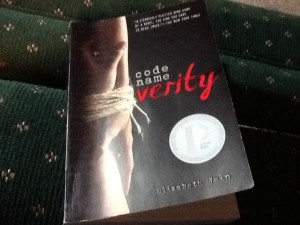 I had high expectations before I started reading Code Name Verity (Hyperion 2012) by Elizabeth Wein. I had read so many reviews that raved over the story of two female spies shot down over occupied France. One is captured by the Gestapo and forced to choose between suffering a grisly death or revealing all she knows. I was not disappointed. I was captivated by the complex characters, twisting plot, and shifting relationships. Weeks after finishing it, I am still drawn to the themes of heroism and friendship explored through this heart-pounding adventure.
I had high expectations before I started reading Code Name Verity (Hyperion 2012) by Elizabeth Wein. I had read so many reviews that raved over the story of two female spies shot down over occupied France. One is captured by the Gestapo and forced to choose between suffering a grisly death or revealing all she knows. I was not disappointed. I was captivated by the complex characters, twisting plot, and shifting relationships. Weeks after finishing it, I am still drawn to the themes of heroism and friendship explored through this heart-pounding adventure.
This is also one of the more complex books I have read in a while. In fact, I had to restart it three times before I could finish. I started reading at school where I could only read 5 – 10 minutes at a time. I often went days before I could find a few minutes to pick it up to read a few more pages. After starting twice this way, I realized I would need to wait to start again and read it when I could dedicate longer chunks of undisturbed reading to it. It was well worth the effort, but it made me think of what my students face when they are reading a challenging text. What made this text challenging? What did I do as a reader to meet those challenges?
- First of all, Verity is completely unreliable as a narrator. From the first page, I didn’t know whether or not to believe her. I wasn’t even sure if she knew whether or not she was telling the truth after being tortured by the Gestapo. I reread the beginning multiple times, looking for clues that I could use to verify what she said. Eventually I had to trust that I didn’t know and keep reading until the end when I learned just how brilliant Verity is.
- Shifting points of view: Verity is writing her confession for the Gestapo. She writes in first person, at least while talking about her present circumstances. She recounts the story of Maddie, her pilot, in third person. She even describes herself with Maddie in the third person. I must thank the Gestapo officer von Linden for pointing out to me that Queenie was the one and the same as the captured Verity. After that I had to pay attention to pronouns and names and remind myself who Queenie was. It was sometimes hard to reconcile the image of the confident Queenie with the broken Verity.
- Time is also fluid in Verity’s confession. She moves quickly from whining about the deplorable conditions of the Gestapo prison to dredging up memories from her past. Sometimes those memories are even related to the list of military subjects provided by von Linden. Paying close attention helped me make the leaps between past and present. Who was she referring to or writing about?
- It would have helped, too, if I had read the quote from the Secret Operations Manual before starting the story: “Passive resisters must understand that they are as important as saboteurs.” That quote explains a lot.
Not many of my middle schoolers are ready to tackle Code Name Verity, but for those who are willing to take on a challenge, this brilliant book will be worth the effort.
Today is our rescheduled meeting for Survivor Book Club. If you couldn’t make it, check out the books we presented. Which book will you read? Which book will be your favorite?
Hidden by Helen Frost
Two girls are brought together by a carjacking turned kidnapping. Years later their paths cross again at summer camp. The alternating voices in this novel in verse will keep you on the edge of your seat.
Emerald Atlas by John Stevens
Three children are taken from their parents and hidden in orphanage after orphanage. At their last stop, they discover a magical atlas and a dangerous prophecy that says they must save the world from the power of an evil witch and her friends. The only bad news—this is the first of three books.
City of Orphans by Avi
The streets of New York City in 189 are a tough place to be if you’re a kid like newsie Maks or orphan Willa. Can they avoid the Plug Ugly gang and free Maks’ sister from jail with the help of only a washed up detective?
Amelia Lost: The Life and Disappearance of Amelia Earhart by Candace Fleming
I thought I knew a lot about my favorite flyer, but I learned much about her life and the search for her after her plane disappeared. I loved the photographs!
Our students presented an amazing program for Veteran’s Day yesterday. The choir, band and orchestra performed musical tributes to our country and those who have served. The color guard from the high school presented the flag and a rifle inspection. A student wrote a moving essay on the cost of freedom that was read to all. Our local mayor, himself a veteran, spoke to our students. He even opened to floor for questions at the end (a brave thing to do with a gymnasium full of seventh and eighth graders). I was impressed with the questions posed by our students as they showed a genuine interest in his military experiences.
Then I took my classes to the library for the rest of the day where we watched previews of books that might show up at the book fair. As I sat surrounded by books, I thought about all the books that had taught me what war is like. The best stories show the brutality of war while honoring those that fight to defend our country and freedoms. The very best ones reveal the complexity of thoughts and feelings involved. Here are my top war stories for middle school.
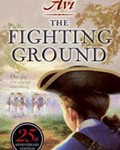 The Fighting Ground by Avi – Jonathan is eager to fight in the American Revolution, but he learns more than he expects when he joins in a battle and is captured by Hessian soldiers.
The Fighting Ground by Avi – Jonathan is eager to fight in the American Revolution, but he learns more than he expects when he joins in a battle and is captured by Hessian soldiers.
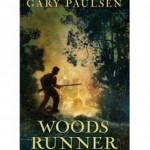 Woods Runner by Gary Paulsen – Samuel normally uses his woods skill to track and hunt food for his family on the frontier, but when he discovers his village burned and his parents taken prisoner, he tracks the soldiers who took his parents to try to rescue them.
Woods Runner by Gary Paulsen – Samuel normally uses his woods skill to track and hunt food for his family on the frontier, but when he discovers his village burned and his parents taken prisoner, he tracks the soldiers who took his parents to try to rescue them.
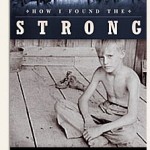 How I Found the Strong by Margaret McMullan – The Civil War has taken much from Frank Russell–his father, brother, his childhood. As the war drags on, he must dig deep to make decisions about the man he chooses to be.
How I Found the Strong by Margaret McMullan – The Civil War has taken much from Frank Russell–his father, brother, his childhood. As the war drags on, he must dig deep to make decisions about the man he chooses to be.
 Soldier’s Heart by Gary Paulsen – Charley Goddard is changed forever by his experiences in the Civil War in this study of the trauma of war.
Soldier’s Heart by Gary Paulsen – Charley Goddard is changed forever by his experiences in the Civil War in this study of the trauma of war.
 A Boy at War by Harry Mazer – Adam is the new kid once again, this time in Honolulu. He is fishing in Pearl Harbor with friends when the Japanese attack on December 7, 1941. His story continues in A Boy No More and Heroes Don’t Run.
A Boy at War by Harry Mazer – Adam is the new kid once again, this time in Honolulu. He is fishing in Pearl Harbor with friends when the Japanese attack on December 7, 1941. His story continues in A Boy No More and Heroes Don’t Run.
 Code Talker by Joseph Bruchac – Ned Begay survives the white boarding school until he signs up for a top secret program with the US Army. There he and other Navajo are trained to create and use a secret code based on their native language. Their code was never broken, and the Navajo soldiers never betrayed their secrets even in the fiercest battles.
Code Talker by Joseph Bruchac – Ned Begay survives the white boarding school until he signs up for a top secret program with the US Army. There he and other Navajo are trained to create and use a secret code based on their native language. Their code was never broken, and the Navajo soldiers never betrayed their secrets even in the fiercest battles.
 Cracker! The Best Dog in Vietnam by Cynthia Kadohata – Cracker is a German shepherd trained to sniff out bombs and booby traps in the jungles of Vietnam. Along with his handler, Rick, he saves many lives, but can he save his own?
Cracker! The Best Dog in Vietnam by Cynthia Kadohata – Cracker is a German shepherd trained to sniff out bombs and booby traps in the jungles of Vietnam. Along with his handler, Rick, he saves many lives, but can he save his own?
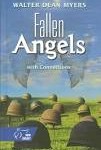 Fallen Angels by Walter Dean Myers – Not all middle school students are ready for this eye-opening account of the Vietnam War through the eyes of a soldier, Perry, but those that are find it hard to put down. Myers also wrote a companion, Sunrise over Fallujah, that follows Perry’s nephew in Iraq.
Fallen Angels by Walter Dean Myers – Not all middle school students are ready for this eye-opening account of the Vietnam War through the eyes of a soldier, Perry, but those that are find it hard to put down. Myers also wrote a companion, Sunrise over Fallujah, that follows Perry’s nephew in Iraq.
 Purple Heart by Patricia McCormick – Private Matt Duffy is awarded a Purple Heart, but he cannot remember what happened for him to earn it. As he works to remember the incident and to heal from his wounds, he must confront the truth even when some wish to hide it.
Purple Heart by Patricia McCormick – Private Matt Duffy is awarded a Purple Heart, but he cannot remember what happened for him to earn it. As he works to remember the incident and to heal from his wounds, he must confront the truth even when some wish to hide it.
 Ghosts of War by Ryan Smithson – Ryan Smithson joined the Army as soon as he could after 9-11. This is the true story of his experiences in Iraq.
Ghosts of War by Ryan Smithson – Ryan Smithson joined the Army as soon as he could after 9-11. This is the true story of his experiences in Iraq.
What are your favorite war stories?
 I’m taking part in the weekly Slice of Life Challenge sponsored by Two Writing Teachers, where teachers write and share each Tuesday. Join in yourself or head over to check out what’s happening with other slicers. If you’re taking part in the SOL, leave a link to your post. I’d love to read it.
I’m taking part in the weekly Slice of Life Challenge sponsored by Two Writing Teachers, where teachers write and share each Tuesday. Join in yourself or head over to check out what’s happening with other slicers. If you’re taking part in the SOL, leave a link to your post. I’d love to read it.
 I love the Al Capone series by Gennifer Choldenko, and this third installment of Al Capone Does My Homework (Scholastic 2013) is my favorite so far.
I love the Al Capone series by Gennifer Choldenko, and this third installment of Al Capone Does My Homework (Scholastic 2013) is my favorite so far.
Moose Flanagan is back, and now he has even more things to worry about. Natalie is home on break from her school for an entire week, and she still won’t look people in the eyes. His dad is now the associate warden. That’s just like having a target on his back as far as the cons go since they have a point system for taking down guards. How can Moose protect his father from the cons? Piper is acting stranger than usual. Where is she getting all the money she’s throwing around? What else could go wrong? How about a fire that breaks out in the Flanagan’s apartment. Everyone wants to blame Natalie. Can Moose and his friends figure out the real culprit before it’s too late?
Just like in the first two books, Choldenko weaves in facts about life on Alcatraz with a captivating story. I enjoyed reading the Author’s Note at the end that explains where she found inspiration for this story as well as sorts out the fact from fiction. Yes, indeed, prisoners did use cockroach messengers to deliver cigarettes from cell to cell. And once again, Al Capone himself comes through to help Moose if Moose can just figure out the clue in time.
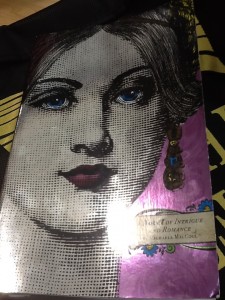 I could present Prisoners in the Palace by Michaela MacColl as historical fiction, but I think the tagline on the cover says it much better: a novel of intrigue and romance.
I could present Prisoners in the Palace by Michaela MacColl as historical fiction, but I think the tagline on the cover says it much better: a novel of intrigue and romance.
Even though the story takes place in London of 1836 and involves historical characters such as the Princess Victoria, it is much more Downtown Abbey than dry history tome. Poor Liza may have been born into a life of wealth and privilege, but her entrance into London society is blocked by the tragic death of her parents. Now alone and penniless, she desperately accepts a job as a lady’s maid to the young Princess Victoria.
It’s certainly not what she expected–more maid than lady-in-waiting. If she survives the gossip below stairs and the trickery above stairs, she just might be able to take control over her life, find true love, and secure the throne for her future king. If she fails, she could live out her short days in a dungeon.
Liza is plucky and determined. Even as fate turns her life upside down, she vows to do the right thing even when it means befriending a spoiled princess and a lost orphan boy. She must learn who in the household she can trust, and who she cannot. My favorite of her allies is one from outside the house–Will, a somewhat honest newspaperman. He’s all for the power of the press, but doesn’t let the facts get in the way of good story.
 I am always amazed by the variety of voices and genres that Avi writes in. City of Orphans gives yet a new voice in Avi’s historical fiction works. The streets of New York City are a rough place to be as a kid in 1893. Even though many things have changed since then, I couldn’t help but think of city streets today as I read.
I am always amazed by the variety of voices and genres that Avi writes in. City of Orphans gives yet a new voice in Avi’s historical fiction works. The streets of New York City are a rough place to be as a kid in 1893. Even though many things have changed since then, I couldn’t help but think of city streets today as I read.
Our hero, Maks Geless, sells papers for the The World, but he he hounded by Bruno and the rest of the Plug Ugly Gang. While running from Bruno and the gang, Maks is rescued by Willa, a street kid with an uptown accent. He brings her home where they learn that Maks’s older sister has been arrested and sent to the city jail known as the Tombs. She’s accused of stealing an expensive watch from a patron of the Waldorf Hotel where she works. Maks has four days to prove her innocence with no one to help but an eccentric lawyer, Bartleby Donck, who guides them in the art of detection. Meanwhile, Willa tags along and searches for answers of her own.
Believe it or not, all these different characters and storylines are connected by threads they cannot see, and neither does the reader until close to the end. The narrator brings the city streets to life–filled with crowds and dirt and danger. For the most part I enjoyed the voice of the narrator, who gives the story the feel of an old detective show (the really old shows like Dragnet), but sometimes the strong voice interrupted the flow of the story when giving too much commentary on the action.
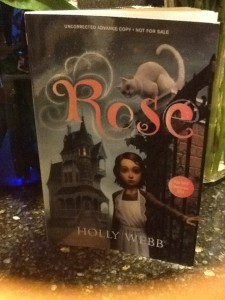 There’s a new orphan on the loose from the UK, and she just might have a touch of magic herself. Rose is absolutely delightful, even if she desperately hopes to be sensible enough to be chosen to work as a maid in Mr. Fountain’s house. Now if she can just stop creating images in shiny surfaces when she tells stories, she might be able to focus on learning her new duties.
There’s a new orphan on the loose from the UK, and she just might have a touch of magic herself. Rose is absolutely delightful, even if she desperately hopes to be sensible enough to be chosen to work as a maid in Mr. Fountain’s house. Now if she can just stop creating images in shiny surfaces when she tells stories, she might be able to focus on learning her new duties.
Whether she likes it or not, Rose cannot escape magic. Mr. Fountain is a famous and powerful magician, and his house fairly shimmers with magic. Even though Rose tries to close her eyes to the magic (servants, after all, aren’t meant to have magic), she soon finds herself curiouser and curiouser as the house itself draws her further into its magic. Soon she is conversing with a very large cat and making an alliance with the grumpy magician’s apprentice and the spoiled magician’s daughter. When they uncover an evil plot that is stealing children off the streets, can they stop it before it is too late?
Holly Webb has created a captivating tale with Rose (coming to the United State in September 2013). Rose’s world is steeped in magic, but most ordinary folk don’t quite trust it. Rose, like one of my favorite orphans Jane Eyre, wants to support herself. She is torn between the ordinary concerns of the household staff and the powerful lure of magic. The best news of all is that Rose’s story continues in more books. I hope they are coming across the ocean soon.
I’m glad I could be part of the blog tour to introduce Rose to readers in the United States. In addition to having a waiting list for this book in my first period class (Don’t worry, I’ll share it with the rest of you, too!), several of those students had the opportunity to ask Holly questions. Here are their questions and answers.
from Lexy: What inspired you to write Rose?
My editor, Kirsty, suggested I write a book about someone becoming magical, but that was it! Apart from that, I really wanted to write some historical fiction, as I loved reading books set in the past as a child (I still do). My favourites were A Little Princess and The Secret Garden by Frances Hodgson Burnett, an English-American author. A Little Princess has an amazing London setting, really full of atmosphere. I wanted to combine that with magic!
from Hunter: What do you like about writing?
You can do it wherever – on a train even. I wrote my first book while I was commuting, mostly sitting on the floors of super-busy trains. And it’s fun! I love creating characters, and then people talk to you about them, which is incredibly exciting.
from Brayden: How do you come up with ideas?
It’s hard. Mostly I work at it for a while, writing down notes and teasing it all together, and just occasionally you have an idea out of nowhere, which is really wonderful. I thought of the end of the second Rose book on the way home from taking my children to school. I had to hurry home and write it down!
from Emma: What kinds of things do you like to write about?
I write quite different books – stories about animals, which is great because I love animals, and I’ve always had lots of pets. I also feel very strongly that people should treat animals properly, so I try to make my characters think about their animals very carefully. Then some of my books, like Rose, are magical ones. Although the animals always sneak in there too – and then the animals can talk. I love writing magical animal characters, because they can be allowed to say things that people never could! I find describing magic really interesting, I love imagining how it would be.
Maybe, just maybe, there may be more exciting news coming! In the meantime, grab a copy of Rose a travel back to a past filled with magic.
 Jonah and Katherine hope to have a little time to spend in the twentieth century before going on another time adventure, but the past catches up with them when Daniella (Anastasia Romanov in 1918) shows up on their doorstep with their friend Chip. Before they know it, Gavin (formerly Alexei Romanov) has whisked them back to Russia on July 16, 1918, where time is running out for the Romanov family. How can Jonah and Katherine save their friends without a fully working Elucidator and without any contact with time agents. Is there any hope at all when modern day scientists have discovered the remains of the entire family, including the bones of Alexei and Anastasia?
Jonah and Katherine hope to have a little time to spend in the twentieth century before going on another time adventure, but the past catches up with them when Daniella (Anastasia Romanov in 1918) shows up on their doorstep with their friend Chip. Before they know it, Gavin (formerly Alexei Romanov) has whisked them back to Russia on July 16, 1918, where time is running out for the Romanov family. How can Jonah and Katherine save their friends without a fully working Elucidator and without any contact with time agents. Is there any hope at all when modern day scientists have discovered the remains of the entire family, including the bones of Alexei and Anastasia?


















